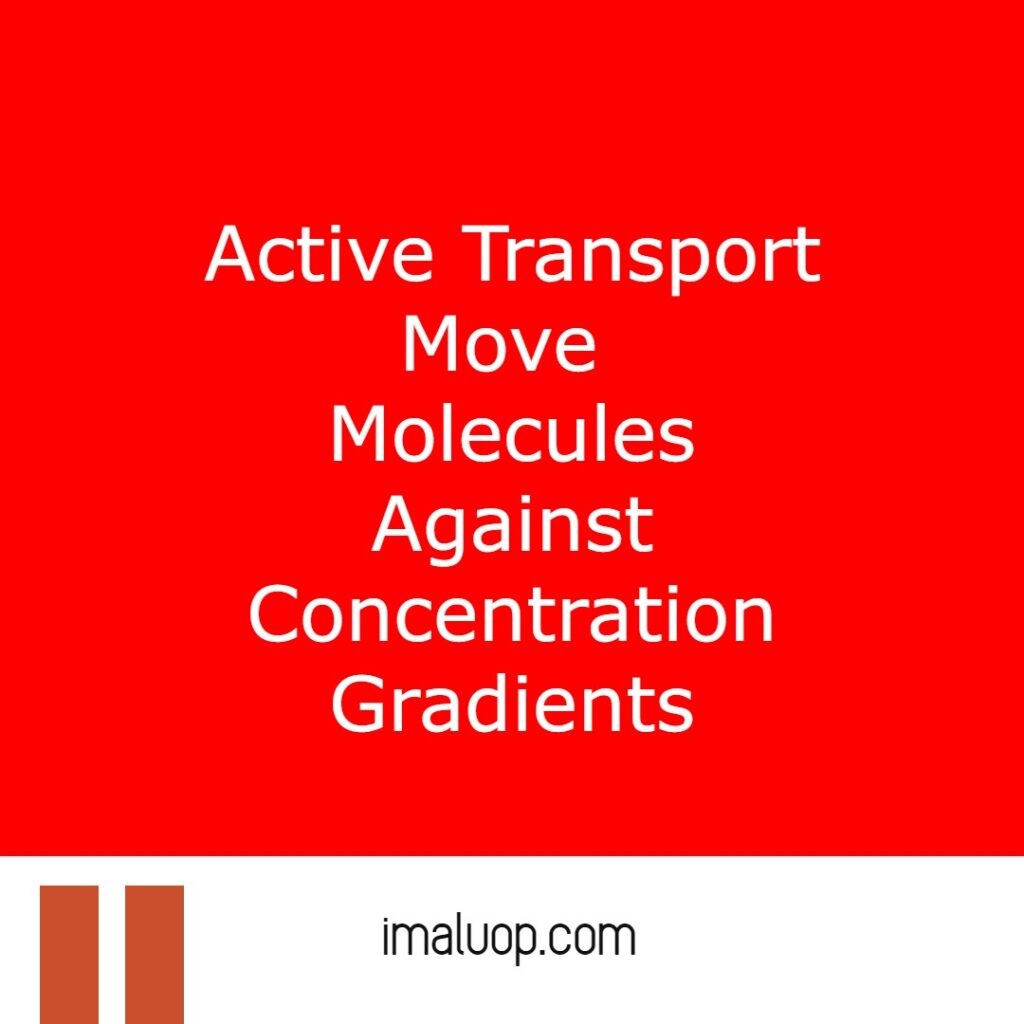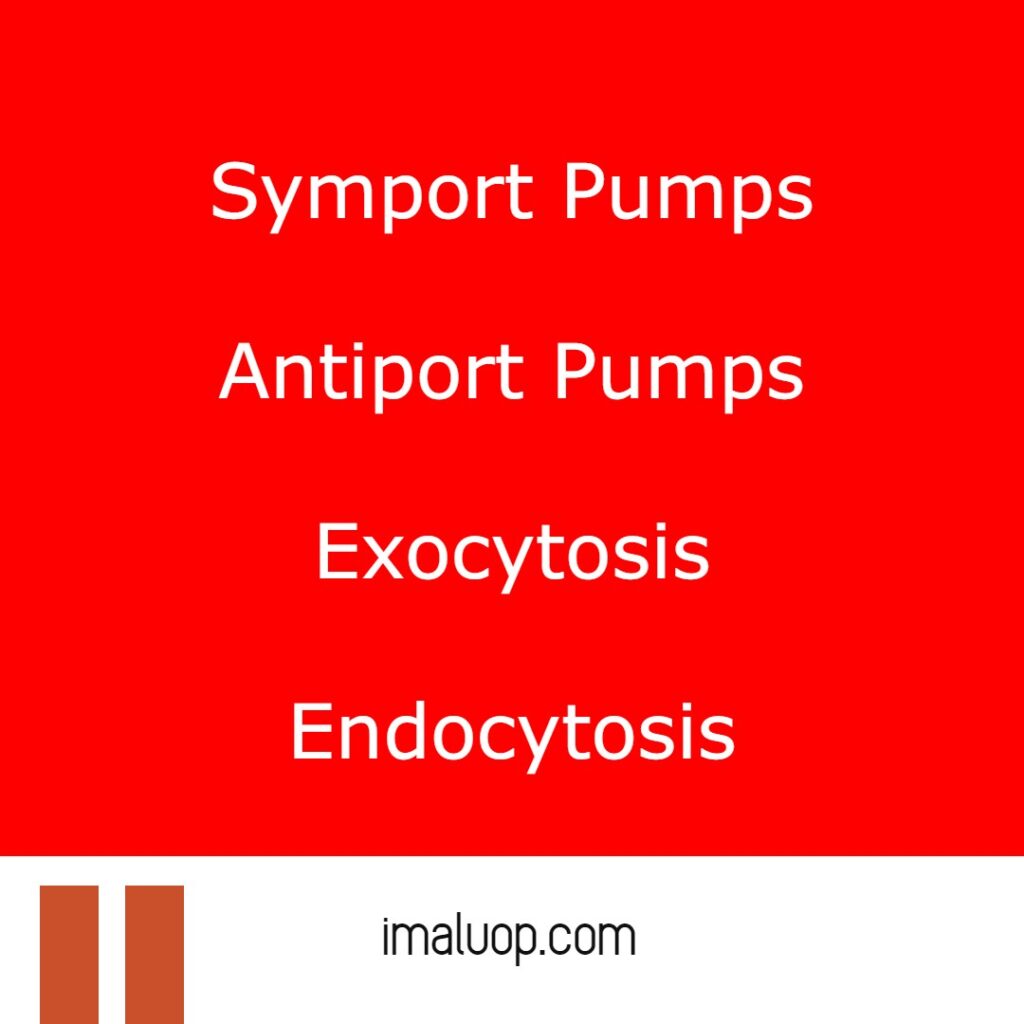Hi, now we will study about active transport and its types in detail. First of all we have to know about what is transported in biological systems. Imagine in our digestive system after the digestion all polysaccharide break down into simple monosaccharides molecules.
Now it is absorbed by blood and the blood helps to reach its required materials to cells. Different types of transport occur in cells but some consume metabolic energy. In active transport ATP is used as energy sources for enter and exit different types of material.
Now we can think that active transport can not be completed without consuming metabolic energy. In passive transport metabolic energy not required then why in active transport energy required? We understand this reason in the following section.

Mechanism of Active Transport:
Suppose concentration of glucose molecules in two sides of a cell membrane is different. Now think on which side the glucose molecules should move according to general principles of osmosis.
The glucose molecules should move from higher concentration side to lower concentration side of cell membrane according to general principles of osmosis. But suppose the concentration on the outside of the cell is much higher than the concentration on the inner side of the cell.
Then it is okay because glucose molecules move from outside to inside of the cell. But if the concentration along the cell membrane becomes opposite to the before then the glucose molecules should move from inside to outside of the cell.
But what happens if cells require glucose then how it is possible to move the glucose molecules against the general principles of osmosis. Now cells have to force the molecule to move the molecules against concentration gradient. And to force the molecule metabolic energy is required.
ATP stored in cells is used as an energy source to move the molecules in active transport. Carrier proteins which transport the molecules actively utilise ATP energy which change the conformation of the carrier protein to transport the molecules.
Types of Active Transport:
Primary Active Transport: All the active transport not operated by ATP. In primary active transport ATP is used as an energy source and the carrier protein participating in primary active transport has a binding site for ATP.
This binding site is present on the cytosol side of the cell membrane which is attached to ATP. ATP attached with this carrier protein breaks down and the released energy helps to transport the molecules across the cell membrane.
Sodium potassium pump is a very important active transport system which is an example of primary active transport which uses ATP as an energy source.
Secondary Active Transport: In time types of active transport occur with the help of some specific electrochemical ions like Na+ ion, H+ ion. These electrochemical ions bind with carrier protein which helps to transport the molecules across the cell membrane.

Process of Active Transport:
Symport Pumps: In this type of active transport two types of molecules move together along the cell membrane in the same direction. In this transport one type of molecules move along concentration gradient while other types of molecules move against concentration gradient. Sodium- Glucose pump is an example of symport pumps in our cells.
Antiport Pumps: In this type of transport two types of molecules move with an antiporter carrier protein move together along the cell membrane in opposite directions. Sodium- potassium pump we discussed before is an example of antiport transport.
Exocytosis: Suppose a cell produces a material which needs to be thrown outside of the cell in bulk. Now how it can be possible inside the cell the material which would be transferred outside wrapped by part of the cell membrane. A vesicle forms around the material with the help of a cell membrane part then the material goes outside of the cells.
Endocytosis: It is just opposite to that of the process of exocytosis. Suppose a material present outside of the cell needs to be transferred inside the cell in bulk. Now an inner side fold formed near the material from where the material would enter inside the cell.

Part of the cell membrane wrapped around the material which forms a vesicle and the vesicle enters inside the cell and releases the contents inside the vesicle into cytoplasm.
Read More: Structure and Function of Nucleic Acids
Reference: Active Transport and its Types
Hi Everyone!!! Welcome to Imaluop. Imaluop always try to learn some new and he want to share to other people. Here we will try to learn various topics on Science, specially on Biological Sciences.
